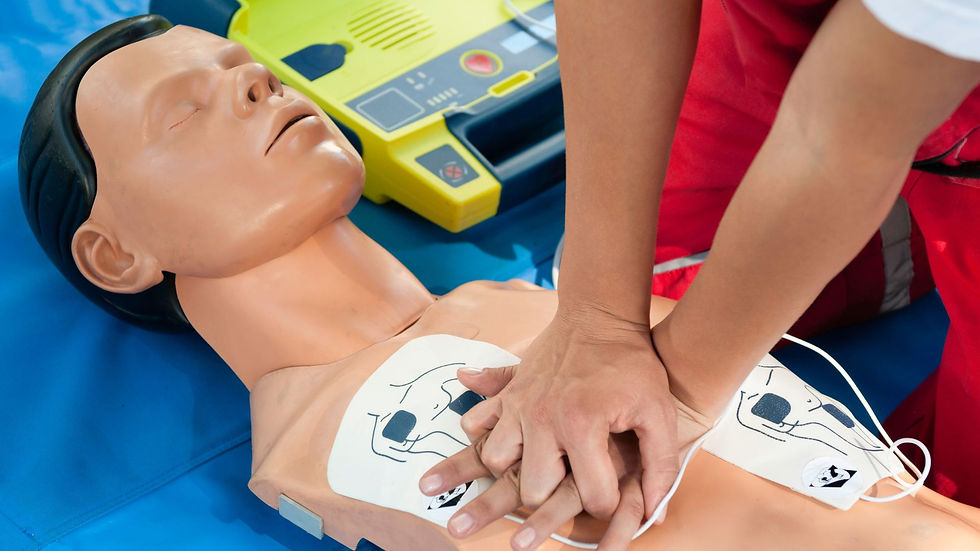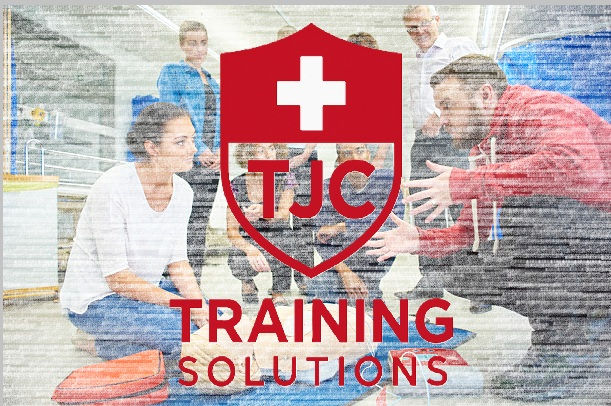How CPR Techniques Can Save Lives in Emergencies
- Tom Christopher

- Jun 17
- 4 min read
CPR, or Cardiopulmonary Resuscitation, is a critical skill that can mean the difference between life and death in emergencies. Whether it's a sudden cardiac arrest, drowning or due to another reason, knowing CPR can empower you to take immediate action and potentially save someone’s life. This post will explore the importance of CPR training, the essential techniques involved, and how you can be prepared for emergencies.
The Importance of CPR Training
According to the American Heart Association, nearly 350,000 cardiac arrests occur outside of hospitals each year in the United States alone. The UK resuscitation council state that 80% of out of hospital cardiac arrests happen at home. Sadly 1-10 survive an out of hospital cardiac arrest in the UK. These figures drive how important learning CPR is.
By learning CPR, you not only equip yourself with life-saving skills but also contribute positively to your community. As the saying goes, "If you see something, say something." But with CPR, it’s more like "If you see something, do something." Your actions can make a significant impact. CPR alone plays a part but it is the combination of using an AED (Automated External Defibrillator), that can really increase the chances of survival. There are plenty of apps these days, including ones that show where your local AED is. Something that is important to know, and something we hope you never have to use.

Types of CPR Techniques
There are different CPR techniques to be aware of, and each technique may vary depending on whether the individual is an adult, child, or infant.
Adult CPR
When performing CPR on an adult, the procedure is as follows:
Check for responsiveness: Talk to them to see if you get a response, gently press and shake the shoulders. Look for multiple signs, as some people may not communicate verbally.
Call for help: If there is no response, call emergency services (Use the loudspeaker function) or ask someone else to do so, remember if there is someone available tell them to get an AED (Defib) too, the ambulance call centre can tell you where the closest one is. (Defibrillators can make a huge difference)
Begin chest compressions: Place your hands in the centre of the chest and push down to 1/3 the chest height, at a rate of 100-120 compressions per minute.
Rescue breaths: After every 30 compressions, provide two rescue breaths if you feel comfortable doing so.

Child and Infant CPR
When it comes to children and infants, the approach is slightly different:
We perform 5 rescue breaths first, before starting CPR. *Remember do not over inflate the lungs.
For children, use one hand for chest compressions and ensure the depth is about one-third of the chest.
For infants, use two fingers in the centre of the chest, and for rescue breaths, cover the mouth and nose with your mouth.
Always remember that the main focus is to call for help and begin compressions quickly. AED's (Defibrillators can make a huge difference), most defibs have paediatric pads in them. If you are unsure the ambulance call centre will normally talk you through this if necessary or you are unsure.
Benefits of Learning CPR
Learning CPR comes with an array of benefits, not only for you but for your family and community. Here are some key advantages:
Immediate Action: In emergencies, every second counts. Knowing CPR can allow you to act immediately. Every minute lost can reduce survival rates by 7-10%.
Increased Survival Rates: Trained individuals can increase the chances of survival until professional help arrives. Studies show that CPR administered by bystanders can double or even triple chances of survival after cardiac arrest especially when an AED is used too.
Empowerment: Acquiring CPR knowledge increases your confidence in handling emergencies. You become a vital link in the chain of survival.

CPR in Real-Life Situations
Imagine walking through a park when you suddenly see someone collapse. Your knowledge of CPR could literally save their life. Everyday scenarios, like witnessing a drowning at a pool (5 rescue breaths before CPR are crucial with drownings).
In 2015, a man in a restaurant successfully performed CPR on an individual who went into cardiac arrest while eating. His training allowed him to spring into action quickly, leading to a successful outcome. Such real-life incidents underscore the importance of being prepared.
Getting Trained in CPR
To gain the skills necessary for CPR, seeking training is essential. You can enroll in certified first aid training CPR courses that cover all aspects of CPR, including adult, child, and infant techniques. These courses generally include hands-on practice, which provides you with the confidence to perform CPR in real situations.
Becoming trained is easier than it seems. Many organizations provide affordable courses, and some even offer training at your workplace.
If you're interested, check out this first aid training cpr link for more resources.
Your Role in Emergency Preparedness
Every community member can play a role in emergency preparedness. Here’s how you can get involved:
Share Knowledge: Encourage friends and family to attend CPR training. Share your own experience.
Promote Awareness: Mention CPR in discussions. The more people talk about it, the more likely they are to take action.
Support Local Training Programs: Advocate for CPR courses in schools and community centers.
Learning CPR isn’t just a personal achievement; it’s a community responsibility. By improving the collective knowledge of CPR, you contribute to creating a safer environment for everyone.
Final Thoughts
Understanding and knowing how to perform CPR can transform you into a life-saver during emergencies. The decision to get trained is not just about acquiring knowledge; it’s about committing to be prepared when someone’s life is at stake.
Equip yourself with these important skills, and you could be the difference that saves a life. Be proactive. Stay informed. Train in CPR.
With preparation, knowledge, and confidence, you can rise to the occasion when emergencies arise. Together, we can create a community where the chance of survival increases for everyone.




Comments